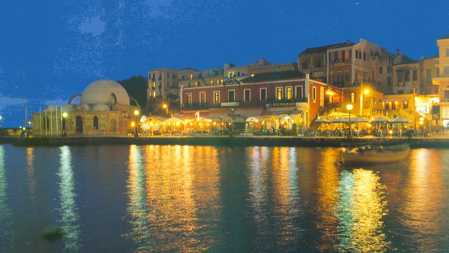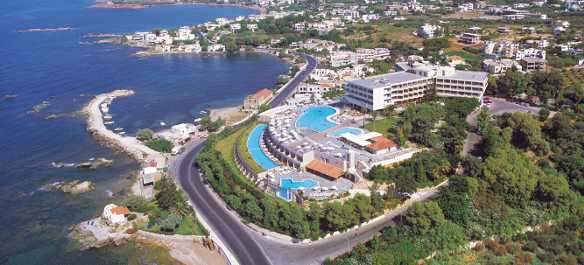|
|
22nd International Tsunami Symposium
Venue
The historical city of Chania, located at the
western part of Crete Island, South Aegean Sea, Greece, is the symposium
venue. The works of the Symposium will be hosted at the Panorama
Hotel, situated at the seashore facing the Aegean Sea a few kilometers
from the historical center of Chania.
Chania is well-known as one of the most beautiful
cities in Greece, while the entire island of Crete, situated between
the Aegean Sea to the north and the Libyan Sea to the south, is
famous for its very long attractions: clean sea waters and magnificent
beaches, high mountains with traditional villages and monasteries,
very important archaeological sites going back to the Minoan times
(2nd millennium B.C.), a variety of local traditions in food, wines
and folklore as well as open and friendly local people.

How to Reach at the Symposium Venue
Chania is connected with Athens by several flights
daily. The Athens-Chania flight time is 40min. Large ferry-boats
sail daily at evening times and cover the distance between Piraeus,
the port of Athens, and Chania in about six hours. Daily flights
and ferries also connect Athens with Heraklion, the capital city
of Crete. Heraklion is also connected with direct flights with several
European destinations. Car driving from Heraklion to Chania takes
about 2.5 hours.

Tsunami History of Crete
The high seismicity and volcanism in the Hellenic
arc-trench system makes the area around Crete to be the most highly
tsunamigenic in the Mediterranean Sea and Europe. Past volcanic
eruptions and tsunami disasters were linked either with archaeology,
like the decline of the Minoan civilization, or with legends like
that of lost Atlantis. It is historically, archaeologically or geologically
documented that particular coastal segments of Crete were hit in
the past by large, destructive tsunamis, like the Minoan wave (17th
Century B.C.) generated by the gigantic Thera volcanic eruption,
the 365A.D. tsunami produced by a large-magnitude earthquake in
the western Hellenic arc that shook large part of the Mediterranean
Sea, the 1303 destructive tsunami produced by a similar earthquake
in the eastern Hellenic arc, the 1650 tsunami caused by a submarine
eruption in the Thera volcanic complex and the large, destructive
tsunami of 9 July 1956 caused by possibly submarine normal faulting
associated with a magnitude 7.5 tectonic earthquake in the South
Aegean Sea.
For a selected list of scientific references please click References.
|


